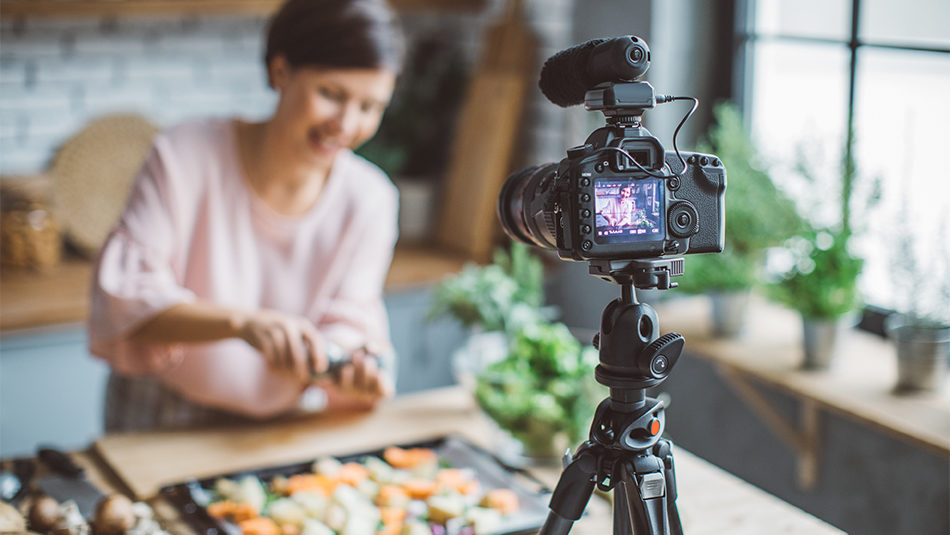
Do Food Influencers Really Have a Strong Influence?
When most food marketers consider a food influencer for their brand, the first steps they take are almost always the same: they head to the influencer’s Instagram, look at their number of followers and scroll through some photos of food. It’s a natural initial evaluation, but they are missing so much of the picture that extends beyond the 1080×1080 square. At EHY, we employ a few more steps and a fresh approach when evaluating and utilizing food influencers in your food marketing strategy.
The great thing about food brands is they generally have a lower cost which makes it easier to encourage trial. This allows your team the luxury of leveraging an expansive influencer roster compared to other industries, where each trial would set you back thousands of dollars. The ability to test different types of people and get more creative with the various types of content means you can better maximize results.
Expand Your Definition of the Food Influencer
Building a food marketing content strategy is no easy task. But, when it comes to tackling your social strategy, the key is to diversify your food influencers across each pillar of persuasion – Ethos, Pathos and Logos. The number of followers and the look and feel of a person’s food photos are important, but they are not the be all end all. While the pillars of persuasion are heavily rooted in followers (Ethos) and authenticity (Pathos), there’s also know-how and context (Logos) to take into account.
Is this person knowledgeable about your particular food brand? Do they understand your brand and values? Have you properly briefed them? This is where most brands fail. They want that one influencer unicorn that has it all, with little-to-no direction or training needed. These people are rare. And if you do find someone that is truly great at the core aspects of influence, they’ll likely fall short when it comes to understanding your brand. You will also find they come with a hefty price tag and work for many competing brands. Their feed is often more of a scrolling billboard or client list than actual storytelling.
Engaging the Highly Followed Influencer
For the people with a ton of followers, but no connection to the brand, send them a thorough creative brief highlighting your brand story. Use branded content with them so you can target and market to their enormous following. Or maybe you let them run a sweepstake on their channel featuring your product. By relinquishing a bit of creative control, you can authentically tap into their network in a fun way thus more efficiently managing your time and resources. Even if the influencer doesn’t know your brand or product that well, they do know their fans. They can help you brainstorm several creative ways to engage them.
Finding the Underground Influencer
For influencers with authenticity but insufficient followers, have them create content for your brand and forget about their reach. These micro-influencers are producing some of the best engagement rates out there. They are your best bet if you lack content but want images of people using your food product without the hassle of managing a big production. This mid-tier approach is especially great for launching a new product or kickstarting a campaign or branded hashtag.
Leveraging Your Biggest Fan Influencer
Do you want an influencer that really loves your products and has the right brand insight and context? Use what I like to call a “hidden influencer” by uncovering an internal super fan or brand loyalist like the now famous Carter Wilkerson. Your social media team will know who you’ll want to talk to. These people are great for video testimonials or curating social content to surprise and delight your audience. Another fun idea is to take a bite out of what the fashion industry is doing with spotlighting employees as models and ambassadors. Create an advocate by encouraging an employee who is passionate about your product. These typical non-influencers will be so happy to be engaged they will freely share their experience on social media. This gives you the opportunity to amplify their stories further turning an internal one-on-one dialogue into a whole social conversation.
Think Beyond Instagram
Instagram is a great way to capture the visual aesthetic. After all, 93% of influencers use it. But it is just one channel in the social media landscape. Don’t forget to scour YouTube for video producers. Scan Twitter for snappy writers and big personalities. Look on Snapchat for a younger demographic. Use Pinterest to find a more female and crafty audience and Facebook or blogs for more traditional, long-form storytellers.
Consider all the content you might want to utilize, like short videos, photos, gifs, cinemographs, memes, recipes, live content. Then, think about where you might source the appropriate content creators.
Go Outside the Food World
Yes, we know you are marketing a food brand. But you are reaching out to people who have all kinds of interests. I have found passionate ancillary food people by reaching out to a broader set of lifestyle influencers. Dads, beauty experts and sports bloggers are a good alternative to the more typical food and mommy bloggers. Besides, your competition is already heavily targeting the obvious personalities anyway. And while food influencers know the landscape well and make wonderful content, the tried and true techniques of recipes, “hands and pans” and overhead table shots won’t differentiate you from other brands. Break it up by involving your products with surprisingly different people in order to enhance the interest of your audience.
The Right Food Influencers Bring Endless Possibilities
Once you start to think of food influencers as an extension of your creative team, the possibilities are endless. Your team will no longer be caught saying, we don’t have food stylists, models, the right equipment or we can’t shoot this or that. With the help of influencers, you can design the kind of creative content calendar that will make your food company proud. After this, you can start marketing to a whole new group of foodies outside of your typical fanbase.







